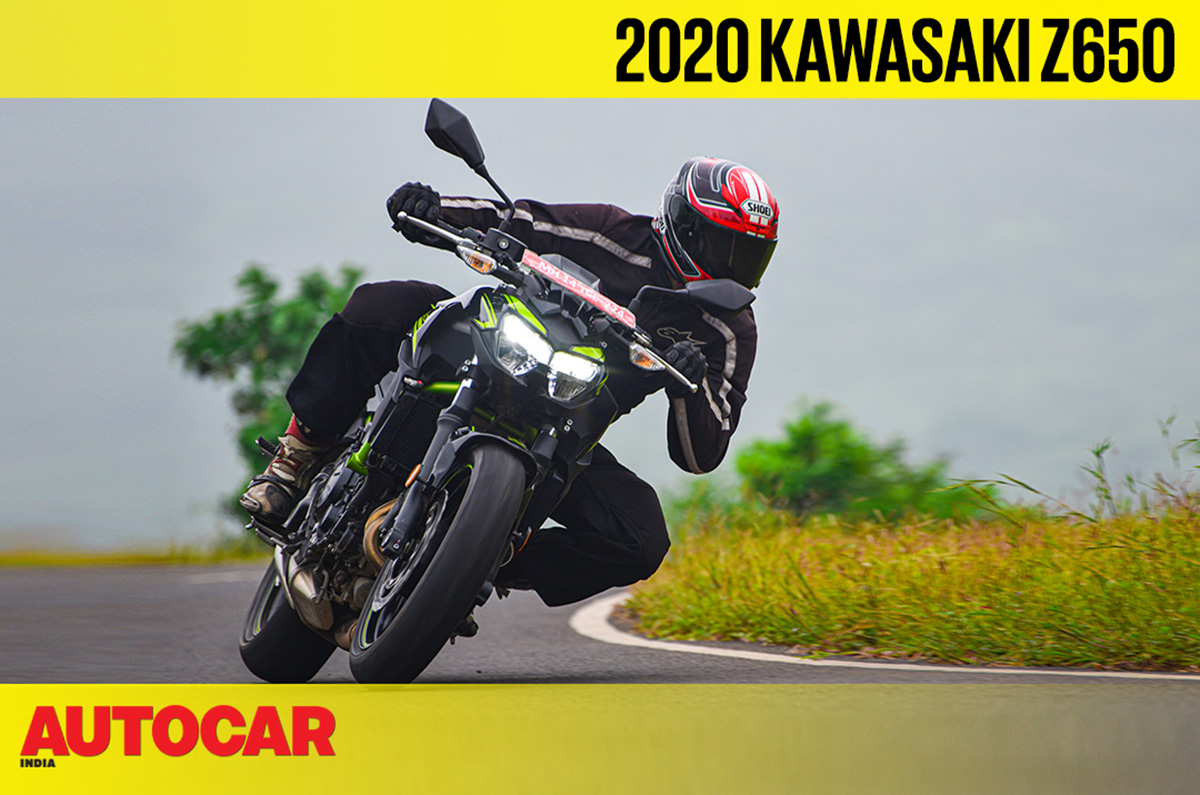
Also see:
2020 Kawasaki W800 video review
Kawasaki W175 to launch in India in 2021
BS6 Kawasaki Z900 launched at Rs 7.99 lakh
2020 Kawasaki Ninja 650 video review
from Autocar India - Bikes https://ift.tt/31Z1OA0

Also see:
2020 Kawasaki W800 video review
Kawasaki W175 to launch in India in 2021
BS6 Kawasaki Z900 launched at Rs 7.99 lakh
2020 Kawasaki Ninja 650 video review
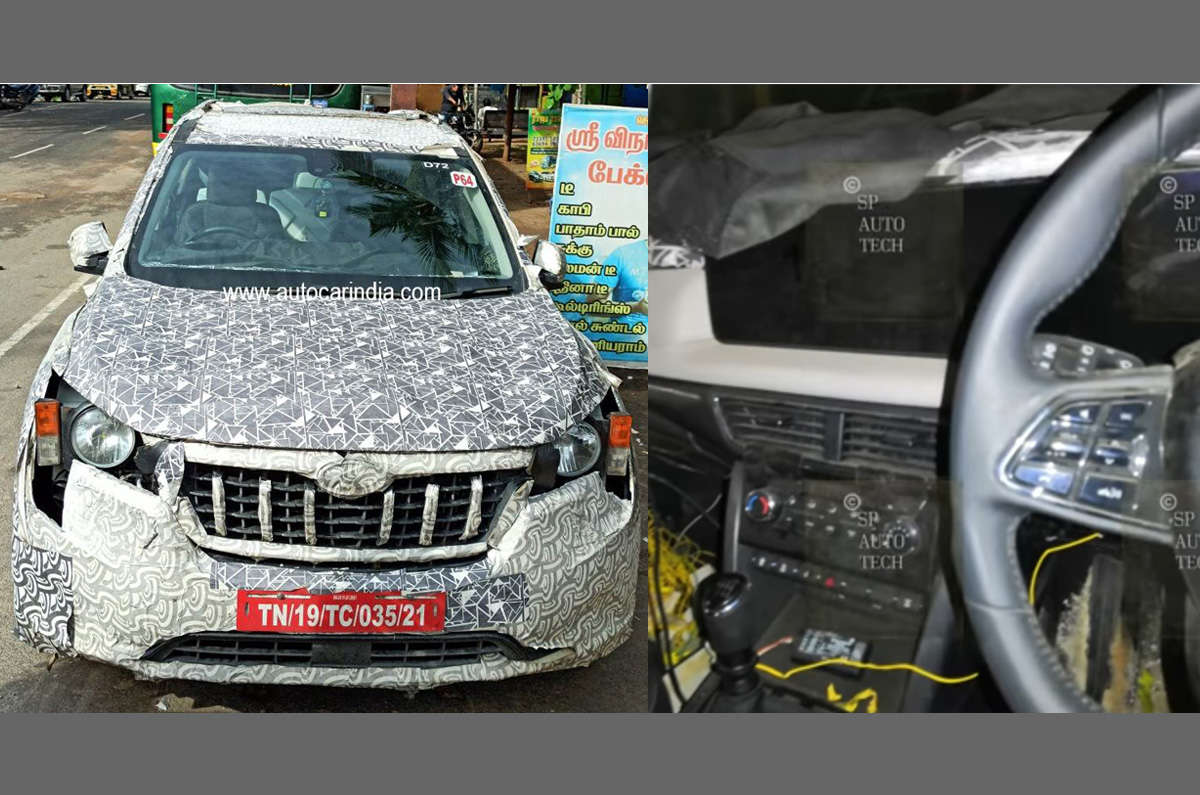
The 2021 Mahindra XUV500 interior has been spied sans camouflage, and the new spy pictures provide the clearest look yet at what the next-gen XUV500 will be like on the inside.
What the new pictures confirm are some key details of the new Mahindra XUV500’s interior, which is a complete departure from that of the first-gen XUV500. Clearly visible in these pictures is a flat-bottom steering wheel, an electronic parking brake (with auto-hold). Placed on the centre console is a dial which could be a controller for the infotainment system or a drive mode selector, and the dial is flanked by the Home, Call and Favourites buttons.
Also seen in these pictures is a large centre armrest up front, chrome-lined AC vents, a beige-and-black colour scheme and a twin-screen setup – inset into the dash panel – which is designed to look like a single, cohesive unit.
Previous spy pictures of the 2021 Mahindra XUV500 revealed a provision for the camera and radar-based advanced driver assistance systems (ADAS), incorporated into the top of the windshield. While the exact specifics of the ADAS remains unclear at this stage, it’s likely the new Mahindra XUV500 could have assistance systems such as adaptive cruise control, frontal-collision warning, lane-departure warning and autonomous emergency braking, to name a few.
The 2021 Mahindra XUV500 is expected to have both petrol and diesel engine options at launch. The petrol engine will be the 2.0-litre mStallion unit – which recently debuted on the second-gen Mahindra Thar – albeit in a higher state of tune, developing 190hp. The 2.2-litre mHawk diesel, meanwhile, will be upgraded and is expected to put out a substantial 180hp.
Gearbox choices for both engines are expected to include a 6-speed manual (which is visible in the new spy shots) as well as a 6-speed torque converter automatic, and an all-wheel-drive system is also likely to be offered with higher-spec variants.
Originally set for a 2020 debut, the new Mahindra XUV500 is now only likely to arrive by March 2021. Competition in the midsize SUV segment has intensified, with the Tata Harrier gaining a more powerful diesel engine and an automatic gearbox earlier this year, the MG Hector continuing to attract buyers, and the launch of the 3-row Tata Gravitas is also on the cards. By adding ADAS and other feel-good features, Mahindra will hope the second-gen XUV500 can lure buyers away from its rivals.
The new XUV500 will also spawn a Ford derivative, which will be designed by Pininfarina. The Ford C-SUV will have an all-new exterior, a new interior and its ride and handling will be true to Ford's DNA.
Think the new Mahindra XUV500’s interior looks promising? Let us know in the comments.
Also see:
25 best new car, SUV discounts this festive season

Nvidia is in the process of acquiring ARM, which made us think of the time when the company, which is best known for its GPUs, was actually a major player in the smartphone market. Here are Tegra chipsets' greatest hits. Two of the first Tegra-powered phones were the Microsoft Kin One and Two, which we've covered in a previous Flashback. Unfortunately, that chipset proved quite under-powered for the kind of UI that Microsoft wanted to run. But that was an early single-core chip. Microsoft Kin One • Microsoft Kin Two The Tegra 2 brought us the first dual core smartphone, the LG...
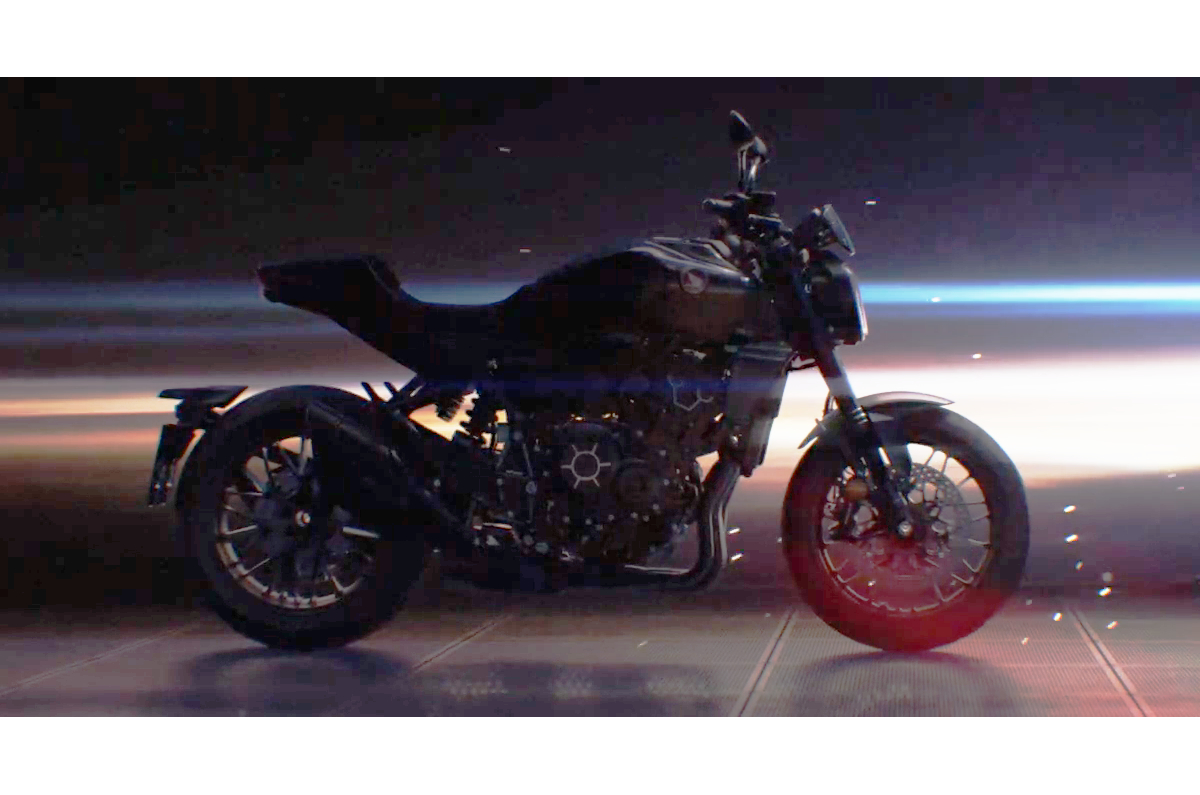
Honda has released a teaser for the upcoming Honda CB1000R, with a full unveil set to happen on November 10.
2021 Honda CB1000R unveil on November 10
Gets minor tweaks to design
Will likely be Euro5/BS6 compliant
Although it isn’t very bright, the teaser reveals the headlight and side profile of the CB1000R. Changes include tweaks to the headlight – it retains its overall design but appears to be at a more aggressive angle than the flat-looking unit on the outgoing model. Additionally, the Honda branding that split the LED circle now looks smaller.
From the side, we can see that the headlight is now crowned by what appears to be a short windscreen. The fork clamps are now black instead of silver and Honda has also reworked the shape of the panels around the radiator and fuel tank.
A brief but silhouetted shot of the full bike reveals a more sculpted rider seat and a W-spoke design in place of the Y-spoke alloy wheels on the current model.
The teaser doesn’t reveal any details on the engine, but it’s likely the 2021 Honda CB1000R will be powered by the same 998cc inline-four cylinder engine that currently makes 145.48hp at 10,500rpm and 104Nm or torque at 8,250rpm. It’s expected to be updated to comply with Euro 5 (BS6) emission norms and this may result in a change in peak output figures.
The Honda CB1000R was one of the big bikes that was retailed by Honda’s BigWing chain, at a price of Rs 14.46 lakh. Honda has plans to expand its big bike portfolio in India and the updated CB1000R will likely be one of the motorcycles to make its way here.
Also see:
Honda H'ness CB350: First look
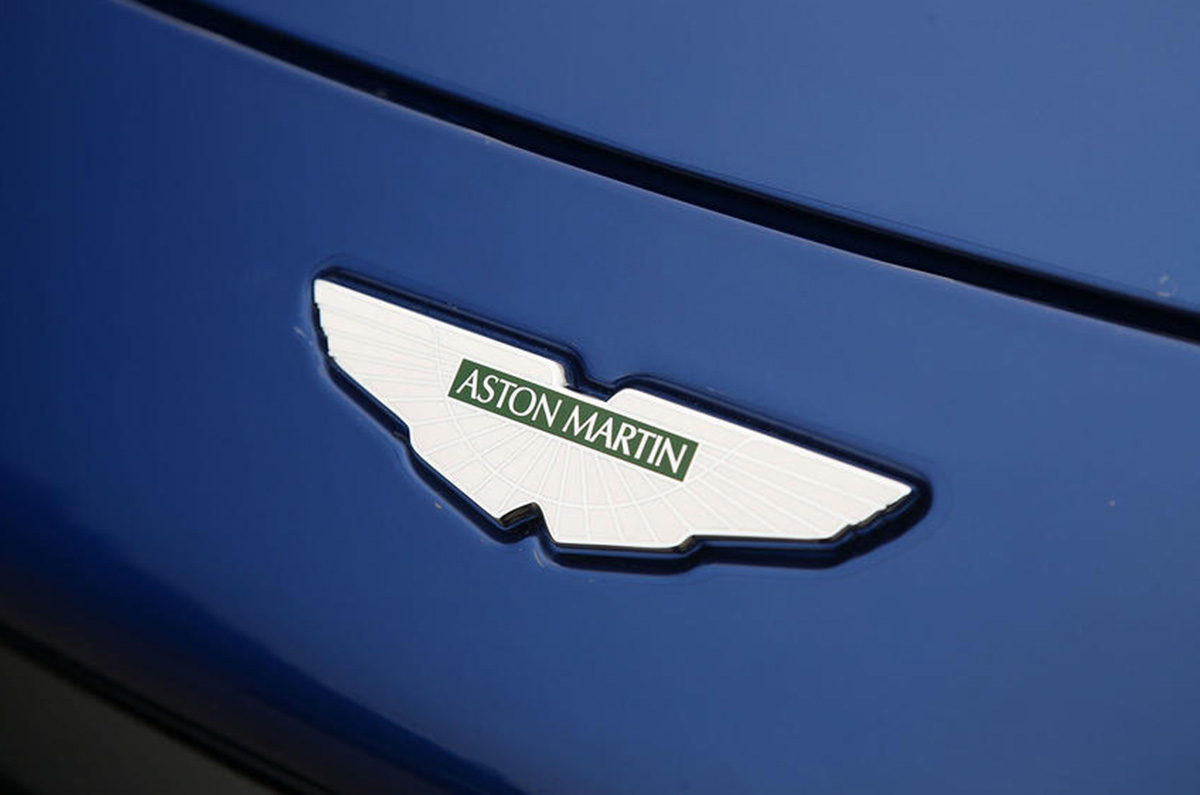
Mercedes-Benz will take a major stake in Aston Martin as part of a strategic technology agreement that will underpin a plan for the British firm to double its sales by 2025.
The agreement expands the existing relationship between the two firms, and will include Aston Martin gaining access to Mercedes’ technology, including electric and hybrid powertrains, that will form a key part of its expansion plans.
In a release, Aston said that the deal included "powertrain architecture (for conventional, hybrid, and electric vehicles) and future oriented electric/electronic architecture, for all product launches through to 2027."
While the firm declined to outline exactly what products were planned under the new agreement, new Aston Martin CEO, Tobias Moers, said that the first Aston vehicles utilising technology from the deal would be launched late next year. He said, "it needs a little time to get the technology in different products" but added, there would be "a kind of product firework in 2023".
With the new agreement in place, Aston Martin has targeted selling around 10,000 vehicles a year by 2025, and is aiming for revenues of around £2 billion (approx. Rs 19,259 crore) and EBITDA profits of around £500 million (approx. Rs 4,815 crore). For comparison, the marque sold 5862 vehicles in 2019.
Lawrence Stroll, whose investment consortium completed its takeover of Aston Martin, earlier this year, said that the 10,000 sales would be comprised of front- and mid-engined sports cars and "a portfolio of SUV products", hinting of new models joining the recently introduced DBX. Around 20-30 percent of Aston's sales by 2024 will be hybrid models. Stroll said that the firm didn't plan to launch a full EV until 2025.
Under the agreement, in return for the technology, Mercedes-Benz will gradually increase its stake in Aston Martin up to a maximum of 20 percent, providing a welcome boost in investment for Aston and making the German giant one of Aston’s largest shareholders. The technology will be supplied "on commercial terms". Mercedes previously owned around 2.3% of Aston Martin shares, as part of a deal that involved its AMG performance arm developing a bespoke V8 for Aston.
While the deal will give Aston Martin access to Mercedes-Benz powertrains and technologies, these will be installed in Aston-built vehicles, which will continue to utilise the British firm's platforms and technology in other areas. Stroll insisted, the firm would continue to produce all its own vehicles at its Gaydon and St Athan plants.
Aston has launched the DBX SUV this year, which will play a major role in growing sales in the future. The new deal is a huge boost to Aston Martin's future plans, giving it access to proven electric vehicle technology without the need to develop its own EV systems. Since taking over, Stroll has already suspended plans to relaunch the Lagonda brand as a range of luxury EVs.
Moers said the plan for Lagonda to become Aston's EV flagship had been abandoned, but hinted that there was still a future for the historic nameplate, he said, "Lagonda is not the brand for electric cars any more. Lagonda has a different purpose for the future. Electric cars are supposed to be Aston Martin."
Also see:
Aston Martin Victor one-off V12 supercar revealed
F1 2021: Vettel to join Aston Martin next year
Aston Martin DBX production commences
Aston Martin DBX could spawn 7-seat, Coupe derivatives

The latest arrival to our office is the Huawei P Smart 2021 smartphone, also sold at some markets as Huawei Y7a. It is an entry-level smartphone that lacks Google services, but brings other promising features like a 48MP camera, a massive battery with fast charging support, and a 6.67” screen with Full HD+ resolution. The retail box of the phone consists of a Huawei SuperCharger that lets you top the phone at up to 22.5W. The technology was initially introduced with the company flagships and it is good to see it trickle to the lower echelons. We have to go through our usual battery...

Our review of the iPhone 12 is already up, but we've also been spending some quality time with the more premium iPhone 12 Pro. But while the review team is still doing its thing here go a few early thoughts. The iPhone 12 Pro certainly makes a better first impression than the iPhone 12. For starters the frame isn't aluminum but stainless steel. It feels better too and it's shinier. The rear glass is nicer to touch too, thanks to its matte finish (the regular 12 gets a shiny one). Finally the iPhone 12 Pro gains 25 grams on the regular 12, making it feel denser and more...

The OnePlus 8T is getting its second software update since launch. The company is now rolling out OxygenOS 11.0.2.3 for all three regions (US, EU, and India). If you haven't received the update yet, it should be available in the next week or so. The 11.0.2.3 update is largely for fixing some of the issues reported in the previous version. It optimizes the system power consumption and reduces heat generation. There also seemed to have been an issue with icons not displaying correctly on the homescreen that have been fixed. There are also some fixes to Bluetooth and the Gallery app and...

Today, T-Mobile is announcing the arrival of the LG Wing 5G directly from the carrier. The phone will be available in both Aurora Gray and Illusion Sky – the latter is not available from Verizon. The Wing 5G is coming with support for T-Mobile's low-band (600MHz) and mid-band (2.5GHz) 5G networks. To boost sales of the LG Wing, T-Mobile is offering a BOGO (buy one, get one free) promotion for anyone who purchases two LG Wing 5G smartphones from the carrier. Although promotions from US carriers usually require customers to add a line or trade in an eligible device, T-Mobile really...
Now, this? This is a road I know. I’ve driven down the Puri-Konark Marine Drive, the beautiful seaside stretch not far away from Bhubaneswar, only once before and several years before, but it was etched so indelibly in my memory, I can almost recognise the corners as I approach them today. The moment I’d heard we’d be going to Odisha, I knew this had to be the road around which this adventure was crafted.
The sense of familiarity turns to confidence, making its way from my brain through to my palms as they grip the Alcantara steering wheel, and to my right foot as it rests resolutely on the accelerator pedal. There’s no need for Strada mode here; it’s Sport all the way. The few speed breakers and sharp corners are clearly marked well in advance, the tarmac is beautifully smooth and blemish free, and though it’s only a two-lane road, each side is wide enough and there’s even some run-off as a bit of relief. It’s a driver’s dream.
Now, though I know this road in particular, there’s surely a lot more to see, not just here in Puri, but in Bhubaneswar proper, and so, once again, I’ve enlisted the help of a local resident to show me the sights and sounds. He’s supposed to meet me here, and well, the sound arrives before the sight.
I flick the paddle up to a higher gear to quiet down my Huracán, so I can have a clearer listen to the sound of a second Huracán approaching at full chat. The V10 scream echoing off the canopy of trees in this wooded area heralds the arrival of a very special version of Lamborghini’s smaller supercar.
A flash of his headlights as the sound gets louder is all the greeting I need; I move about a foot left to give him a wider berth, and watch as the matte blue blur whizzes past. Lamborghinis – it’s addictive even to just be a spectator. Luckily, today I’m no spectator. The blue car barks out a few downshifts as it starts to slow, but I flash my lights and he gets the message, and soon both cars bolt off, shrieking away in unison.
The road snakes through the woods for a bit, with the odd break in the trees giving us a brief glimpse of the sea in the distance. Once we find a comfortable rhythm, the two cars do a bit of a synchronised dance down the road. It’s quite a heady pace, too, and I feel the LDVI system, the electronic brain of the Huracán Evo I’m driving, is getting a pretty decent workout. There are sudden changes in pace, a few corners wind in on themselves, and there’s even some mild elevation change.
We break off the main road, down a sort of driveway that leads right down to the beach. A quick lift of the nose and I cautiously roll onto the bare sand itself. By now our crew has caught up with us and I can see Gaurav darting out of the support car, camera shutter already firing. Two Huracáns parked on a pristine beach together? This is teenagers’ bedroom wall poster stuff right here.
But I’m curious to meet the person who’s led me to this postcard-perfect spot, and about the car he’s driving. Arpit Mohanty bursts out of the driver’s seat enthusiastically and meets me with a big handshake and a hug (these were pre-COVID-19 times). “Gavin! Welcome to Odisha,” he says, warmly and with a glimmer of pride in his eye.
He shows me the lay of the land, where the famous Konark Sun Temple is, how far the beach goes, and which direction Bhubaneswar is. He’s also quite keen to tell me about the work the authorities have been doing to keep this beach, and the road, in this incredible condition. “The government does a lot of Eco Tourism work here,” he tells me. “In fact, they had a three-month-long Eco Festival right on this beach, with a concert full of big musicians, watersports and even 30 cottages specially built.” That was mere weeks ago, and you certainly can’t tell looking at the spotless beach right now.
I learn more about Arpit and his hometown, but soon enough, the conversation turns to his car. “How did you manage to get your hands on one of these?” It’s a Huracán Avio LP610-4, a special edition, with a limited run of 250 units worldwide, and only three of them made it to India.
Meant to celebrate the Italian air force, it was available in one of five unique dual-tone paint schemes, my favourite of which is this subtle matte finish Blu Grifo. I absolutely love the offset white double pinstripe running the length of the car, the white mirrors and the white skirting all around. Then, of course, there are the contrast red brake calipers on this car, and the L63 (Lamborghini – 1963, the year the company was founded) and the Italian air force tricolour roundel, which is quite similar to what you’ll find on our own IAF aircraft. This fascinating level of detail continues inside, with the L63 roundel logo embroidered on the seats and a plaque that says ‘1 of 250’. And just to turn the wick up even further, he’s put an aftermarket exhaust on it.
“I got lucky, honestly,” Arpit tells me. “I wanted a Huracán LP580-2; in fact, I even placed the order. But while I waited to take delivery, Lamborghini called to say they had this very special car available, and that too in my favourite colour, blue. And well, of course, I said yes!”
Arpit, ever the gracious host, wants us to try the local Oriya fare, and offers to take us for a meal unlike anything we’ve tried before. How could we say no? As it turns out, however, leaving the beach isn’t going to be quite as easy as it was reaching it. The on-ramp is narrow, with little space for a U-turn, so both Huracáns are tasked with a delicate, multi-point turn to get out. But then it strikes me, these are modern cars with parking sensors and rear-view cameras, and so in a move I never thought I’d ever make, I find myself backing all the way up the ramp; it’s as easy as pie.
Roaring back to Bhubaneswar is even more entertaining than the drive up here, now that I have company. And company that knows every corner, dip and crest of this road perfectly. With a fast lead car ahead of me, it’s far easier to carry more speed into and out of corners, and let’s just say Arpit has no intention of slowing the pace. And why should he; the roads are just brilliant and conducive to putting down every last one of the 640 horses. Rear-wheel steer, torque vectoring and the four-wheel-drive system, they’re all working together to make my life so much easier in this Huracán Evo.
The pair of Lamborghinis make a relatively subdued entrance to the city, grumbling low like a pair of prowling big cats as they navigate the urban jungle. Weaving calmly between rickshaws and motorcycles, I do notice one thing, however. The roads are impressively wide and well marked here, and there’s a pretty decent sense of order to the traffic. I don’t even have to exercise the nose lift function as much as last time, because the speed breakers all seem to be built to a comfortable regulation size. What a welcome environment in which to drive a supercar. Bhubaneswar may be traditionally known as the City of Temples, but it’s also classified as a Smart City.
On the way to that epic meal, Arpit’s taking me on a small, impromptu tour of the city. Amidst all the bustle is the Ram Mandir, bang on the main street, where we stop for a few photographs. Understandably, the cars are swamped by curious passers-by, and we’re quick to get moving again to avoid causing a traffic jam, but from what Arpit tells me, supercars actually aren’t that uncommon a sight here.
There’s a decently sized exotic car community here, including one rather rare Lamborghini Aventador SV, and of course, Arpit’s Avio is quite a regular on these roads. In fact, as we pull up for lunch, there are already a few petrolheads waiting to greet us. And by that I don’t mean pounce haphazardly at the cars to take selfies and then disappear but genuine enthusiasts curious to know more about the cars, who have their own blogs that they share with us, and happily, all readers and viewers of Autocar India as well.
The meal was as novel and even more extravagant than described, and with that we say goodbye to our host and go out for one last blast around town. The Huracán Evo, by now, feels like home to me. The controls and switchgear, with all the quirkiness and extravagance of a supercar, and nothing like your average sedan, are now etched into my muscle memory. I can reach for the nose lift switch without looking, I know the door pocket is just the right size for my phone, and if I want to turn the music down and hear the engine, I’ve realised it’s a simple two-finger swipe of the touchscreen away. It’s all come together to make exploring this city just as easy and enjoyable as any other road trip. Okay, who am I kidding, a whole lot more enjoyable.
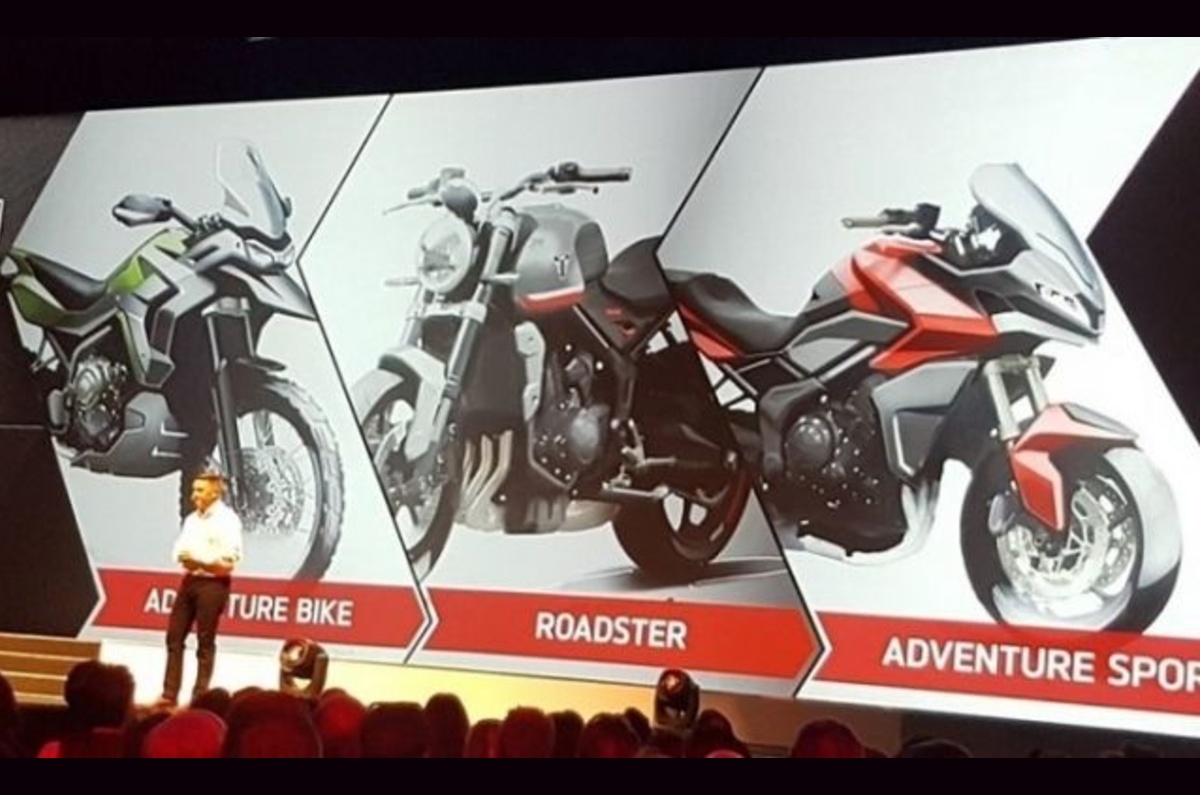
Triumph Motorcycles could possibly be working on developing more motorcycles on its new 660cc platform, that currently underpins the new Triumph Trident.
New Trident is likely to share its engine and motor with two new 660cc motorcycles
Triumph is aiming for the middleweight Adventure motorcycle and Adventure Sport motorcycle segment
First motorcycle on the platform, the Trident goes on sale in India, in 2021
Triumph recently introduced the new Trident, it's a 660cc roadster and it will go on sale in India, in 2021. That very platform, however, could also spawn other motorcycles, judging by a clip of the presentation that was shown to a few international dealers during a recent summit.
Look closely and you'll notice that the image of the Triumph Trident is flanked by an Adventure Motorcycle and an Adventure Sport motorcycle on either side, likely to be powered by the Trident's inline-triple engine. That said, Triumph is expected to optimise the engine's state of tune and gearing to suit the applications of each of these motorcycles.
Under the distinctive bodywork on these motorcycles, the main frame appears to be the same, once again, hinting these are based on the same platform. We shall confirm this once Triumph reveals these motorcycles in production form.
Although the motorcycles may be based on the same platform, the styling is markedly distinct and in keeping with the purpose of the motorcycles.
The Trident is the quintessential roadster, that's built to take on the cut and thrust of the city. The yet unnamed Adventure motorcycle, looks the part with its Triumph Tiger 900 inspired design. Also, notice the large wire spoke wheels, the beak, long travel suspension and the bash plate on the bike in the sketches. Typical Adventure motorcycle stuff!
In the middle of this range, lies the Adventure Sport motorcycle that should offer the performance and practicality of a street motorcycle (Trident in this case), while offering comfier ergonomics, a fairing as well as a windscreen to keep the wind off your chest, possibly more features and a provision to mount luggage.
Triumph seems to be betting big with its new 660cc platform, going by these images. The new motorcycles should give Triumph the ability to compete in a burgeoning middle-weight motorcycle market.
We've already seen Kawasaki leverage the benefits of platform sharing with its wide 650cc platform. The Japanese manufacturer has built the Z650, Ninja 650, Versys 650 and the Vulcan 650 on the same platform. And all of these motorcycles are currently on sale in India.
With such clear benefits, Triumph is expected to expand its 660cc, middleweight platform soon. While the Trident goes up against the Kawasaki Z650 and Yamaha MT-07, the 660cc Adventure Sport should lock horns with the Kawasaki Versys 650. The Triumph adventure motorcycle, on the other hand, should compete with the likes of the Suzuki V-Strom 650.
Also see:
Triumph Tiger 900 launched from Rs 13.7 lakh
Triumph Street Triple R launched in India at Rs 8.84 lakh
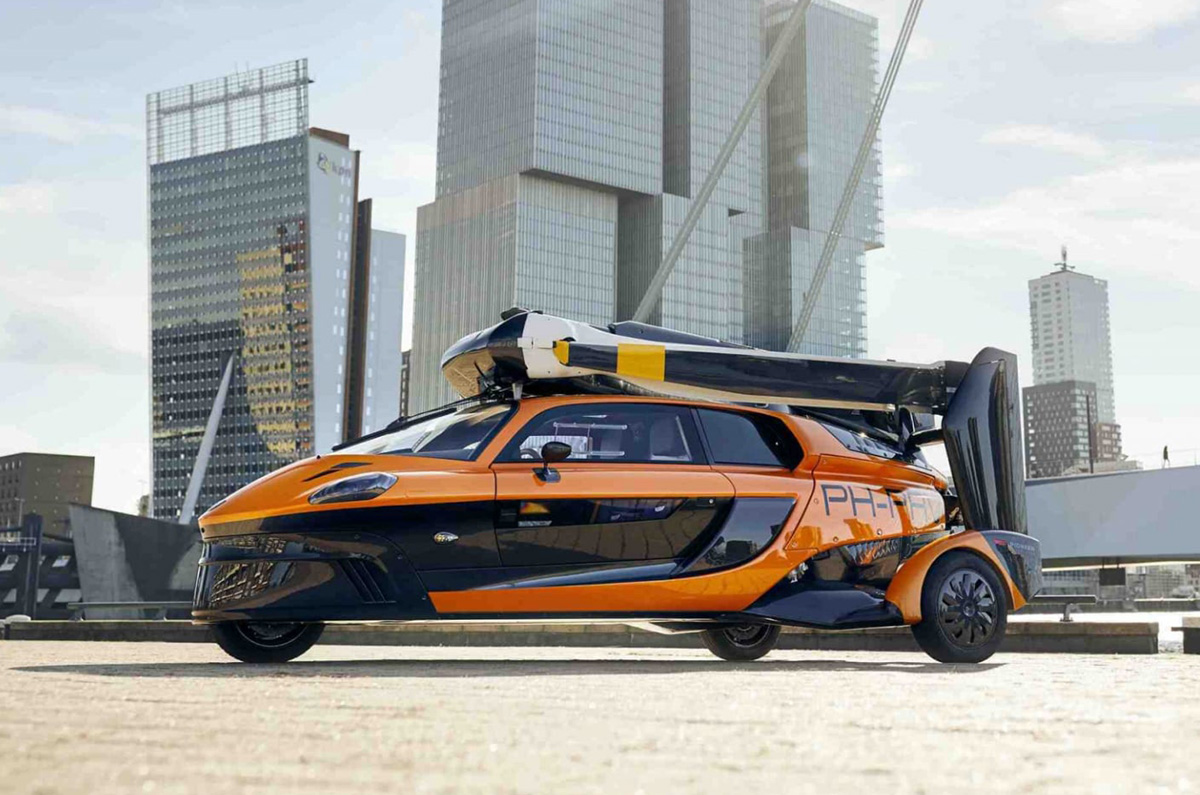
The PAL-V Liberty, the world’s first commercial flying car, has been approved for road use in Europe. The company says this brings it another step closer to deliveries with the car also undergoing aviation certification with the European Aviation Safety Agency (EASA).
With the completion of the European road admission tests the Liberty is now allowed on the streets in Europe with an official license plate. Under the tests, the flying car underwent a rigorous and extensive drive test program that was carried out on test tracks since February 2020, which included high-speed ovals, brake and emission tests to noise pollution testing.
Mike Stekelenburg, CTO, PAL-V said: “We have been cooperating with the road authorities for many years to reach this milestone. The excitement you feel in the team is huge. It was very challenging to make a ‘folded aircraft’ pass all road admission tests. For me, the trick in successfully making a flying car is to ensure that the design complies with both air and road regulations. I feel the energy and motivation in our team to push hard for the last few milestones and get the Liberty certified for flying too.”
PAL-V originally announced prices for the Liberty back in 2017 with the car also showcased the 2018 Geneva motor show. The carmaker at the time targeted starting deliveries to customers across the globe and even in India from end-2018 though this has been much delayed
The Dutch firm says since 2015 the PAL-V Liberty design has been also going through aviation certification with EASA (European Aviation Safety Agency), and the finalisation is expected in 2022. The PAL-V Liberty benefits from the certification experience accumulated in the earlier flight test program with the PAL-V One. Over 1,200 test reports need to be completed before the final 150 hours of flight testing can take place. After this the deliveries to customers will start.
The company claims its reservation book is growing beyond expectation. As 80 percent of the future PAL-V carflyers are new to aviation, some of them have started the training for a gyroplane flying license at the PAL-V FlyDrive Academy.
Also see:
Hyundai to showcase flying car concept at CES 2020

Back when Apple added a fingerprint reader to the iPhone 5s, it made it impossible to replace by anyone other than an authorized technician. That makes some sense – a bogus reader may circumvent security. But over the years more and more components have become difficult to replace. During its teardown and testing of the iPhone 12, iFixit found that taking the camera out and replacing it with an identical module from another phone causes issues. And not just the error report you get when you swap screens (“Unable to verify that this iPhone has a genuine Apple display”). No, this looks...

Earlier today, LG posted its earnings report for the July-September period and results from the mobile division are looking promising. Operating income from mobile was listed at KRW 1.52 trillion ($1.34 billion) - a 17% quarter on quarter increase in sales. Despite this, the mobile division is still operating at a loss - $124.9 million for Q3 which is down from the $169.1 million loss in Q2 2020. LG saw improved sales figures across major markets in North and South America. The LG Wing, Velvet and Q51 were listed as the key smartphones for LG in the past quarter. Increased production...

Cyberpunk 2077 might be delayed to December but the special edition of the OnePlus 8T is still on track for a November release. The company confirmed it's coming on November 2 with a modified camera island on the back. The phone is expected to have a custom theme, similar to other cross-branding partnerships in the past. The teaser image suggests the rectangle on the back is getting extra wide to incorporate “2077” for extra fancy looks but it's unlikely that the actual cameras will be any different. Cyberpunk 2077 is expected to arrive on Xbox, Playstation, Windows, and...
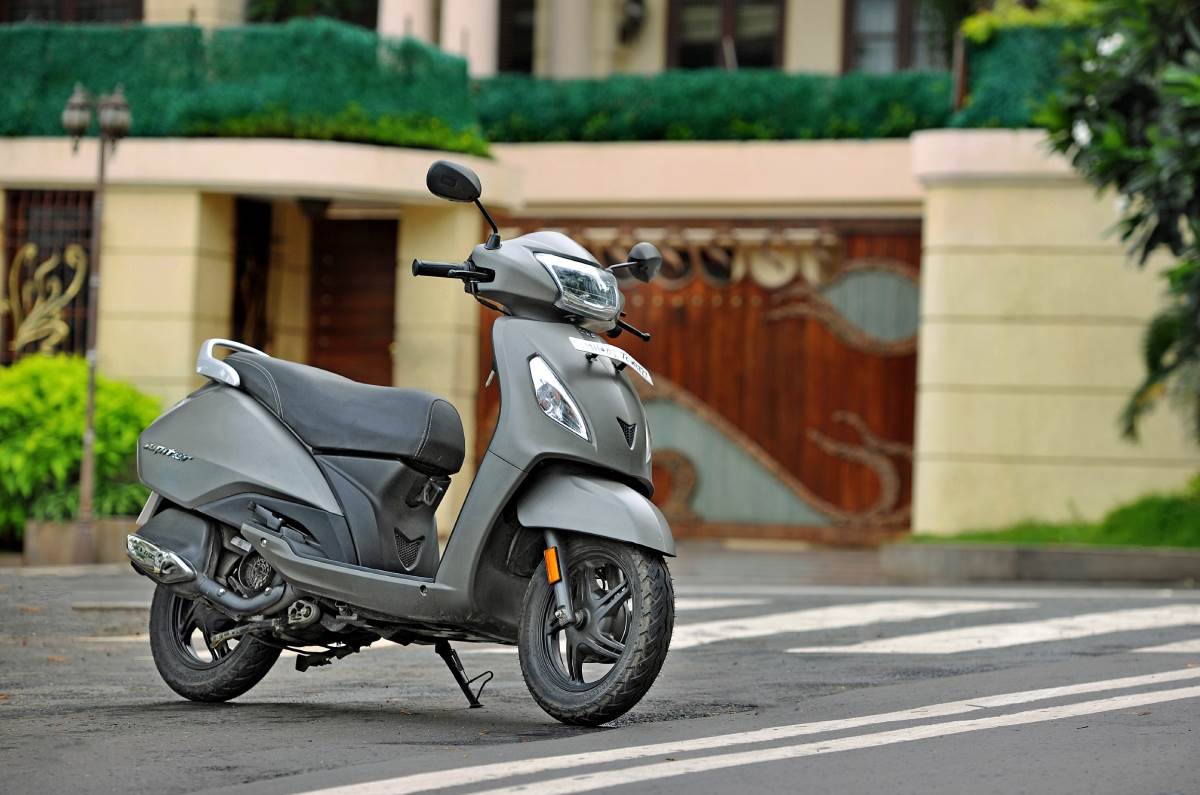
Chennai-based two- and three-wheeler maker, TVS Motor Company has reported its financial result for Q2 FY2020. For the quarter, the company reported revenue of Rs 4,617 crore (+6 percent) as against Rs 4,353 crore for the same period a year ago. The profit after tax (PAT) came at Rs 196 crore, which is lower by 23 percent YoY.
The company says, despite the COVID-19 challenges, it strengthened its supply chain during the second quarter of 2020-2021. The production and sales improved consistently from July 2020 onwards. In July, the company sold 2.44 lakh two-wheelers, which improved to 2.77 lakh units in the month of August, and in September sales went up further to 3.13 lakh units. During the quarter, the total two-wheeler sales was 8.34 lakh units, which is almost in line with last year's sales of 8.42 lakh units.
The Q2 sales include 3.66 lakh motorcycles (Q2 FY2020: 3.42 lakh motorcycles) and 2.70 lakh scooters (Q2 FY2020: 3.33 lakh scooters).
In terms of three-wheelers, the company sold around 33,000 units in the quarter ended September 2020, as against sales of around 43,000 units in the quarter ended September 2019.
Also see:
TVS Apache crosses the 4 million mark
TVS Ntorq 125 SuperSquad Edition launched at Rs 83,327

As reported by The Verge, Netflix is announcing new rates for US-based subscribers. Currently, the streaming service offers three-tiered plans. The entry-level Basic $9 plan only allows for a single stream at up to 480p resolution and remains unchanged. The next tier - Standard, which is Netflix’s most popular, is being increased from $13/month to $14 – this plan allows for up to two simultaneous streams at up to 1080p resolution. Finally, the Premium tier is going from $16/month to $18. This tier allows for up to four simultaneous streams at up to 4K resolution. Netflix...

Best Buy got impatient and stopped waiting around for Black Friday. The retailer has ousted some outstanding deals on smartphones, but these, as far as we can tell, are all very short-term. Like, one day only. That means if you like what you read about here, you need to jump straight up to one of the Source links below and make your purchase quickly. First up, we have Samsung's very own 'flagship killer', the Galaxy S20 FE. Its normal retail price is $700, we've seen it offered for $600 a bunch of times, but now you can pick it up for only $350. That's an insane deal, but there are...
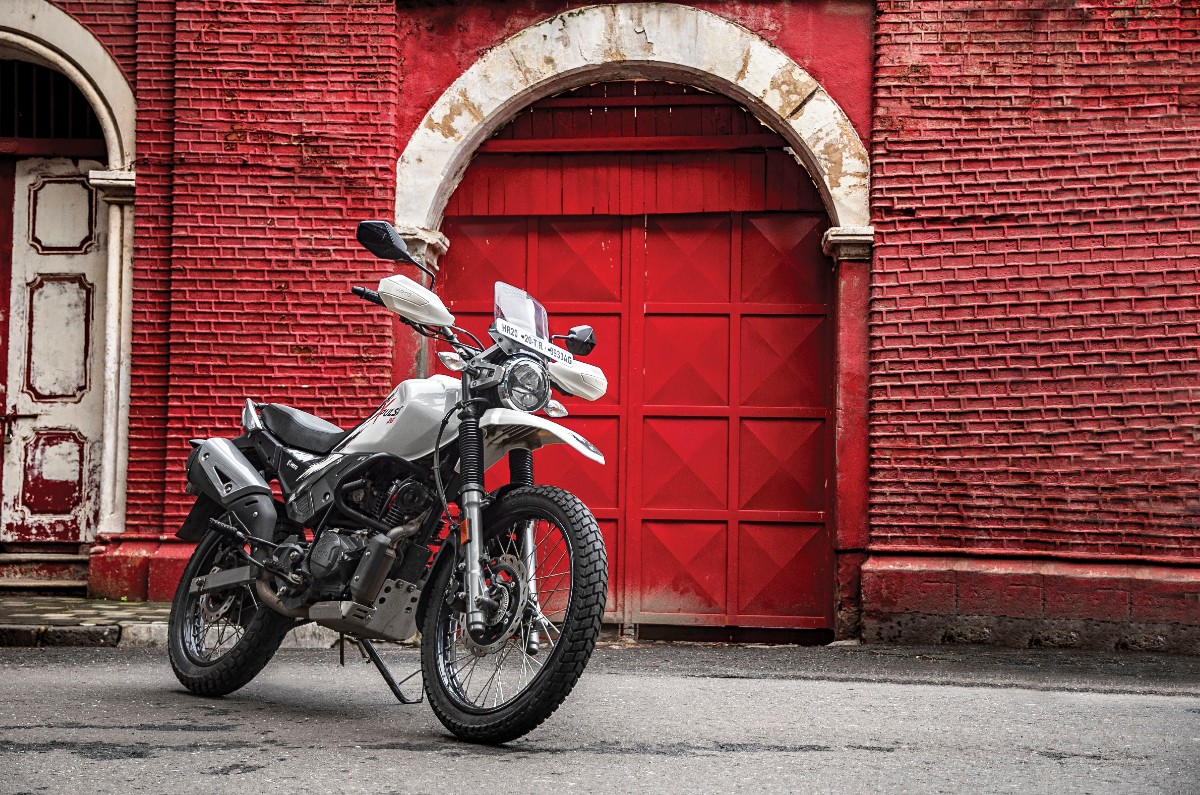
Our regular readers will recall that the Autocar Xpulse 200 long-term test bike (last seen in December 2019) was green and had a different number plate. That particular bike was one among the pre-production units that were used for the press ride event in May 2019. We ran it for a while, but after a few visits to the workshop for multiple small niggles, it was decided that the best course of action would be to get an actual production-spec unit for our long-term review. This was around early 2020, and with the promise of an improved BS6 iteration on the horizon, we decided to wait for a BS6 model to begin our long-term test with. The white motorcycle you’re looking at here is our new long-termer, and this time around, it’s a proper production-spec unit.
More than impressed, I’m relieved with the improvements that have come with the BS6 model. The engines on all the previous XPulses we’ve ridden (all pre-production, mind you) felt stressed when run hard, and, in a couple of cases, even started making an unhappy sound from the valvetrain after extensive hard usage. For a bike with just 18.4hp and 154kg to move around, high revs were going to be a constant state of being for this machine. Thankfully, the BS6 update makes big improvements here.
The most apparent change is the inclusion of an oil cooler. The engine now sounds and feels smoother when revved out. The fact that the power has reduced by 0.6hp and weight has gone up by 3kg is of no real consequence either, because our test figures show that the real-world performance is about the same as before.
The new bike has only been with us for a few days, and so far, it’s proven to be a very nice commuter. Aside from the wide handlebar, the bike slots through traffic just as well as any sporty 160cc commuter and its ride quality is something those bikes couldn’t dream of matching. We haven’t had enough time with it to test the real-world fuel efficiency so far, but it seems to be consuming fuel at a pleasingly slow rate.
Some things haven’t changed from the old Xpulse and the switchgear still occasionally sticks, while the rubber pads on the small luggage rack are already lifting. Quality appears to be on the same level as before, but given the intended usage of this motorcycle, it’s something I don’t mind living with.
Of course, we have much more planned and, in addition to messing about off-road on the weekend, we’re also planning to take it out on a multi-day trip as soon as the situation allows for it. Eventually, we’re hoping to get the rally kit on this bike too and that will really boost its abilities.
Also see:
Yamaha MT-15 long term review, second report
KTM 790 Duke long term review, second report
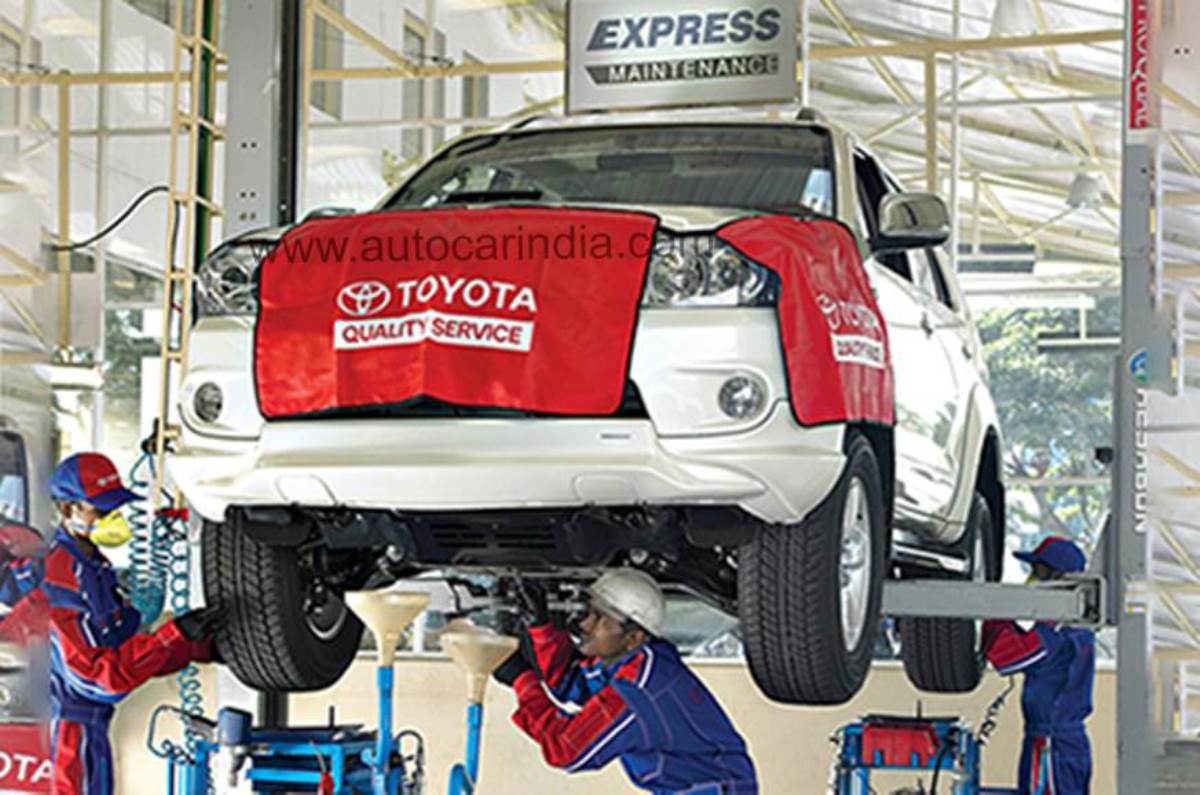
Toyota has increased its service coverage across smaller towns and cities by launching 87 service locations in the country. Dubbed ‘Pro Service’ centres, the outlets have been opened in areas which did not have authorised Toyota service touchpoints earlier.
Moreover, the company has also set up a regional stockyard in the Northeast, to facilitate vehicle deliveries in the region.
Toyota’s Pro Service centres mark the first time that the carmaker has tied up with dealer partners in India for exclusively catering to customer service requirements, without having corresponding vehicle sales operations. The outlets have been opened in Narnaul (Haryana), Nagaur (Rajasthan), Jorhat (Assam), Kharagpur and Asansol (West Bengal), Morbi, Patan and Palanpur (Gujarat), among other locations.
Commenting on the initiative, Naveen Soni, Senior Vice President, Sales and Service, Toyota Kirloskar Motor, said, “There was an emerging business need for service operations in smaller cities and towns, owing to the increasing number of Toyota car owners. We have carefully selected the new locations, looking at cities and towns that have seen a rise in Toyota car owners, to ensure service to our customers closer to their homes.”
The Pro Service centres are equipped to cater to Toyota’s complete range of vehicles and provide free services, regular periodic maintenance, minor general repairs and minor body and paint repairs. Toyota says that the outlets will receive parts supply, in addition to technical and operational support and training for the entire staff, directly from the company.
Notably, however, the Pro Service workshops are also permitted to service vehicles from brands other than Toyota.
Toyota has also announced the launch of its first regional stockyard in India. Set up in Guwahati, Assam, the facility is aimed at supplementing the 13 customer touchpoints in the Northeast region by reducing the vehicle delivery time for customers “from the current 13 days to a maximum of two days for furthermost dealers in the Northeast states”.
The company says that it has been witnessing growing demand from the area over the years and that its latest move should improve customer satisfaction, especially during the festive season which is expected to witness relatively higher passenger vehicle sales.
Toyota currently has 396 outlets and 79 dealer partners across India. With the launch of the Urban Cruiser and Glanza, Toyota is aiming to increase its market penetration and is in the process of opening new sales and service touchpoints in Tier-III and Tier-IV cities, particularly in central India and the Northeast region. The move should help prime the company’s network for upcoming products from its partnership with Suzuki.
Also see:
Upcoming shared products from Maruti, Toyota will have bigger differences
2021 Toyota Fortuner facelift revealed
2021 Toyota Innova Crysta facelift revealed

If you're in the US and are wondering which carriers are going to offer the upcoming OnePlus 9, that may be coming sooner than expected, then wonder no more. The enterprising folks over at XDA Developers have discovered, through a deep dive into the OxygenOS code, that the OnePlus 9 is in fact headed to both Verizon and T-Mobile. On the other hand, the OnePlus 9 Pro seems to only be on the way to T-Mobile, with Verizon seemingly foregoing the more expensive option. The OnePlus 8 was also offered by Verizon There are very good hints about all of this in the OxygenOS code, but...

Samsung Germany is currently running a “Payday” promotion starting on October 28 through November 18 for any customers who purchase a new Samsung Galaxy flagship phone and register the purchase through the Samsung Members app. Customers can get €200 off when they purchase a Samsung Galaxy Z Flip, or Z Fold 2, €150 off when they purchase a Galaxy Note20 Ultra or S20 Ultra, or €100 off when they get a Note20, S20, S20+, or S20 FE. The discount will be honored as a Samsung Pay rebate, so customers would need to pay the regular retail price and then register for the...

With T-Mobile’s recent acquisition of Spring, the carrier has been working all year to strengthen its mid-band 5G reach. The 2.5GHz spectrum is what T-Mobile calls its “goldilocks” band – which strikes a balance between reach and speeds (low-band 5G doesn’t have the best speeds and mmWave has pretty bad reach). T-Mobile’s mid-band 5G spectrum (2.5GHz) came from Sprint. T-Mobile is announcing its mid-band 5G network has been expanded to reach “nearly” 410 cities and towns all over the US (up from 210 US locations one month ago). The carrier hopes to cover 100 million Americans by the end of...
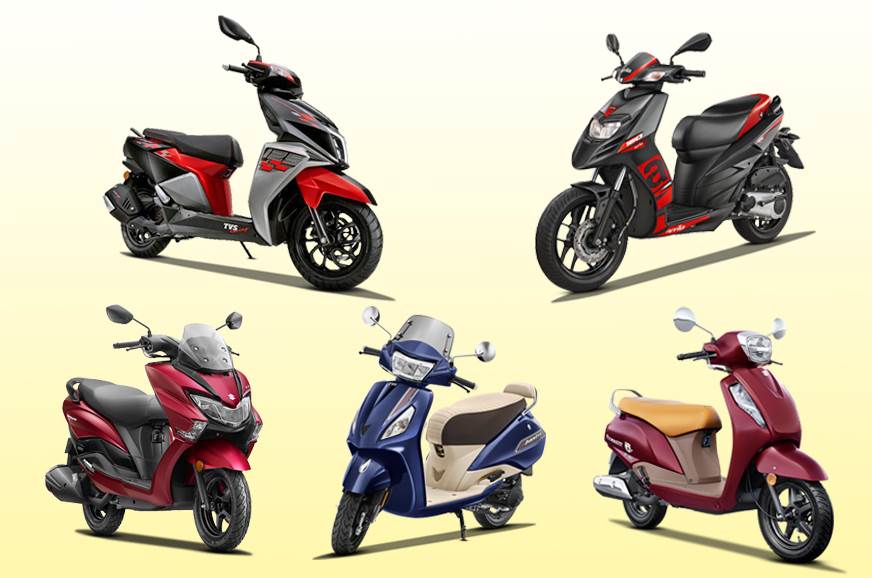
The scooter segment is a huge part of the two-wheeler business in India and its popularity has been growing as the country’s economy slowly recovers from the lockdown. With people looking to avoid public transport, two-wheelers (scooters, in particular) offer the most affordable alternatives in terms of personal transport.
With that in mind, this is the list of our five favourite scooters on sale today. This selection is not based on any particular criteria, like price, performance or efficiency, but is instead a list based on the scooters we have enjoyed the most from all the testing we’ve done over time. The scooters selected meet different needs, and based on your criteria, the list should help you find the right one for you.
The reason that the TVS Jupiter makes it to this list is because it’s our choice for all those who want a no-nonsense practical scooter. Why? Well, the Jupiter has always had a nice engine, but it has the edge over other models when it comes to suspension comfort. And the fact that it has 12-inch wheels on both ends makes it feel more stable than the competition as well. We haven’t yet had a chance to ride the new BS6 model, but there’s no reason for things to change massively.
However, before we go onto number four, there is one thing to consider – Honda has taken years to get the job done, but the new Activa 6G now finally offers some of the features that made the Jupiter so good, and that includes features like a telescopic fork, a 12-inch front wheel and an external fuel-filler cap. The moment the world gains some semblance of normalcy, we’re going to go find out whether the TVS Jupiter can hold onto its crown! But for now, let’s move to scooter number four.
Price: Rs 61,499-67,911
Engine: 109.7cc, single-cylinder, air-cooled FI
Power: 7.45hp at 7,000rpm
Torque: 8.4Nm at 5,500rm
It’s been four years since the Aprilia SR 150 came out, and we think it’s still the most stylish and sporty looking scooter out there. The SR also rides like no other scooter, and that’s thanks to its 14-inch wheels and its massive wheelbase, which is even longer than many commuter motorcycles. Throw in a stiff suspension setup, firm brakes and a peppy motor, and what you have is the sportiest scooter-riding experience India has to offer.
More recently, Aprilia has even given the SR a new 160cc engine to meet the BS6 regulations, and the scooter is now called the SR 160; the rest of the platform is unchanged. We’re waiting to ride the SR160, but its new fuel-injected motor is essentially the same carburetted 150, albeit with a slightly longer stroke. The resulting power and torque figures of 11.1hp and 11.6Nm, respectively, make it the most powerful scooter on sale in India today.
So, why is the SR so far down our list? Simply put, it makes too many compromises in its quest to have fun, and it only really shines on super-smooth roads. The suspension is unforgiving, the seat is quite tall and uncomfortable, the 14-inch wheels eat into boot space, and the floorboard is cramped as well. The upcoming, brand-new Aprilia SXR 160 may solve those issues, but until then, the Aprilia is number 4.
Price: Rs 1.04-1.14 lakh
Engine: 160cc, single-cylinder, air-cooled FI
Power: 11hp at 7,600rpm
Torque: 11.6Nm at 6,000rpm
Suzuki India goes through the effort of making purpose-built models just for our market, and the Burgman Street is one of them. This is Suzuki’s idea of a maxi-scooter for the masses, and under that substantial-looking bodywork is an Access 125 platform. The result is a premium and expensive-looking scooter, and it's no surprise that it carries a full Rs 6,200 price hike over the top-spec Access. What you get for your extra money is a larger, smart-looking scooter with a more spacious seat.
However, what lets the Burgman Street down is that it isn’t really spacious enough for tall riders who will find that their knees meet the handlebar while taking tight turns. If you ask us, that sort of defeats the purpose of buying a maxi-scooter and that's why the Burgman ranks lower than the scooter that comes next.
Price: Rs 77,900
Engine: 124cc, single-cylinder, air-cooled FI
Power: 8.7hp at 6,750rpm
Torque: 10Nm at 5,500rpm
Ask anyone in the Autocar office what scooter they’d like to own and you’re likely to hear the same answer. In fact, three of us actually do, and what sets the Ntorq apart is that it has one of the best suspension setups you will find on any scooters; one that balances comfort and sportiness really well.
Up until the BS6 update, the Ntorq was also the quickest 125cc scooter we’d tested. The BS6 transition has resulted in a drop in its performance and the scooter isn’t as peppy as it was before, but it is great fun to ride, nevertheless. The Ntorq brings so much more to the table in the form of its detailed LCD display and Bluetooth connectivity, which also enables turn-by-turn navigation. For BS6, it even gets fuel injection, while the new Ntorq Race Edition now packs a funky-looking, full-LED headlight. What seals the deal partly is that the Ntorq is very well priced, but mainly it is one of the few scooters in India that accommodates tall riders with enough space between their knees and handlebars.
The BS6 update has also resulted in better fuel-efficiency, addressing one of the downsides on the previous iteration. This, in addition to the many things the Ntorq already had going for it, means that it remains a firm favourite for us here at Autocar.
Price: Rs 65,975-72,455
Engine: 124.8cc, single-cylinder, air-cooled FI
Power: 9.38hp at 7,000rpm
Torque: 10.5Nm at 5,500rpm
The Access 125 is the product that single-handedly changed Suzuki’s fortunes in India. It is, by far, Suzuki’s most popular product and it’s gone on to build quite a fan following over the years. Why? It all comes down to a simple, no-nonsense formula.
The Access 125 sports a straightforward design, has no unnecessary features, and it packs a very quick and enjoyable 125cc engine, one that outperforms all of its competition in this BS6 avatar. Now fuel-injected for BS6, the Access manages to be quite fuel-efficient as well, but the best part of the package is its very competitive price. If you want a quick, no-nonsense scooter, you simply cannot go wrong with the Access 125.
Price: Rs 67,100-71,700
Engine: 124cc, single-cylinder, air-cooled FI
Power: 8.7hp at 6,750rpm
Torque: 10Nm at 5,500rpm
That marks our top five list in the scooter category, and based on your priorities, one of these will surely meet your needs. However, before we end, we’ve got to give a shout-out to the fact that we now have three high-quality, made-in-India EVs – the Ather 450X, Bajaj Chetak and the TVS iQube. All three are genuinely impressive and vastly superior products compared to the hordes of low-cost Chinese EVs flooding our market. Unfortunately, you can only buy them in one or two cities at the moment, and that’s why they don’t make it to this list.
All prices, ex-showroom, Delhi.
Also see:
Top 5 bestselling motorcycles between Rs 1-1.5 lakh in FY2020
Bike launches expected post lockdown
India’s most fuel-efficient BS6 diesel cars
Most affordable BS6 scooters in India

Maruti Suzuki India, in collaboration with Microsoft Research India, has developed a smartphone-based technology fortesting driver’s licenseapplicants.
Harnessing Automobile for Safety (HAMS) technology
The Harnessing Automobile for Safety (HAMS) technology has been deployed at the Automated Driving Test Centre (ADTC), Dehradun, in association with the Transport Department, Government of Uttarakhand. The technology is being developed and tested jointly by Maruti Suzuki-promoted Institute of Driving and Traffic Research (IDTR) and Microsoft Research India.
Maruti Suzuki has partnered with state governments to setup state-of-the-art ADTCs. These centres are equipped with advanced video analytic technology to check the driving skills of the applicants and replace manual assessment of candidates.
HAMS stringent test delivers accurate results
Deployment of HAMS at ADTC Dehradun has brought encouraging changes in the testing process. It takes only 10 minutes to complete the test and generate the report. The average pass rate now stands at 54 percent, as compared to over 90 percent in the earlier manual testing mode. According to Maruti Suzuki, feedback from the candidates, including those who fail the test, has been positive. The candidates appreciate the objectivity and transparency of the entire process.
Maruti Suzuki’s involvement
Speaking on the deployment of this new test technology for driver training, Ajay Kumar Tomer, executive advisor, Maruti Suzuki India said, “Maruti Suzuki started its driving training initiative in 2000. We have cumulatively trained over 3.4 million drivers nationally. Efficient testing of candidates seeking a driver’s license is an important step towards imparting good driving behaviour. Use of latest technologies help bring transparency. HAMS, developed in partnership with Microsoft Research India, is an important tool to modernise the driving license test in our country. Starting with ADTC Dehradun, this technology will be introduced in more centres across several states.”
Microsoft Research India’s view
Highlighting the benefits of HAMS technology, Sriram Rajamani, managing director, Microsoft Research India said, “Positively impacting society by combining technology and human ingenuity has been a core objective for us, and the HAMS project is a great example of this. We use technology to help drivers drive safely. It is inspiring that Maruti Suzuki India and the Department of Transport, Government of Uttarakhand, see the potential to save lives using HAMS technology and are piloting this technology to help make Indian roads safer.”
How HAMS works
During the testing process, the applicant’s car is fastened with a HAMS-enabled smartphone that monitors the driver as well as the road infront. It employs advanced artificial intelligence models for efficient and robust operations. For driving tests, HAMS has been customised to include capabilities such as precise tracking of the vehicle’s trajectory during designated test manoeuvres.
To ensure transparency, in case of a disagreement on the test results, applicants can also avail the option of viewing a video recording of their test drive.
The key technical capabilities of the ADTC Dehradun include:
Also see:
No physical documentation required: MoRTH on amendments to CMVR
Government proposes to make obtaining driving license easier for colour-blind citizens
Up to Rs 62,200 off on Maruti Suzuki Nexa cars in October 2020

AMD today announced the Radeon RX RX 6000 series of gaming graphics cards. Built on the new 7nm RDNA 2 architecture, these cards provide up to 2x improvement in performance over the previous generation AMD flagship while also including support for the new Microsoft DirectX 12 Ultimate API and will be available starting November. The most important card in this series will likely be the $649 Radeon RX 6800 XT. It features 72 compute units and 16GB of 16Gbps GDDR6 memory on a 256-bit wide memory bus. The 6800 XT can clock up to 2015MHz under load (or Game Clock as AMD likes to call it)...

Qualcomm is about to launch the Snapdragon 875 chipset in December, and we expect a “lite” version of the flagship platform to tag along. It would be the logical successor of the Snapdragon 765 series and would act as a more affordable chip that can offer pretty similar performance. The leakster that goes by the (machine-translated) name Digital Chat Station revealed Oppo is developing a smartphone that will have that new chip with a working name Snapdragon 870. The new chipset by Qualcomm will be able to reach 3.2 GHz speed of the CPU, and we assume this will be only one...

Ever since reports surfaced that Huawei was working on its own operating system called Harmony OS (also known as HongMeng OS), rumors swirled that the company would eventually replace Android with it. Huawei eventually refuted that the OS wasn't intended for smartphones. Of course, this was before the Huawei ban was issued by the Trump Administration. Huawei officially announced it last August. A new report from MyDrivers cited an interview with Wang Chenglu, Head of Software Development at Huawei Consumer Business Group. In this interview, the question of how EMUI 11 and HongMeng OS was...
A car is an extension of who you are. It’s a reflection of how you think and feel. It is a statement of not only what you have achieved, but also how you have grown. And for those who have grown to understand that power can be elegantly balanced with luxury, refinement and the best in technology, there are the Mercedes-Benz GLE SUVs. Designed for those that enjoy that elegant balance there are three variants of the Mercedes-Benz GLE LWB. For those that prefer an extra dose of refined aggression, there is the Mercedes-AMG GLE 53 4Matic+ Coupe. And both versions provide something that only Mercedes-Benz vehicles excel at – being luxuriously-appointed accomplished all-rounders.
Unparalleled comfort. That is the focus of the Mercedes-GLE LWB. This is a thoroughly modern SUV that allows you to go almost anywhere without putting a hair out of place. Every single thing about every variant of this SUV, including the engine, the suspension, the features and the interiors have been fine tuned for driver and passenger comfort. Speaking of variants, you get to choose from two diesel options the GLE 300 d and the GLE 400 d and an all-new petrol GLE 450 4MATIC version with a first-in-India EQ Boost technology. The GLE 300 d is an upgrade from the GLE 250 d which was the best-selling Mercedes-Benz SUV in India. The GLE 400 d and the GLE 450 4MATIC are the new top-end variants.
All variants, however, share a distinctive, elegant design. The Mercedes-Benz GLE’s sheer size makes a strong first impression. Its signature raked-forward C-pillar that makes it easy to identify on the move. Its powerful shoulders give it a wide, planted stance. The LED high-performance headlamps with the two LED bars subtly indicate that it’s the E-Class of SUVs. The ridges on the long, gently-sloping bonnet and the tight lines around its nose complete the elegant, yet powerful look.
The design story continues on the inside with an added layer of luxury. The comfortable and supportive ARTICO man-made leather seats on both rows are electrically adjustable and recline for added relaxation. Then there’s the massive legroom thanks to its extended wheelbase. The ambient interior lighting system presents a choice of 64 colours at the owner’s disposal. And let’s not forget the panoramic sliding sunroof that adds a dimension of lightness and space to the interior like nothing else.
A highlight, though, is the technology. Take the MBUX infotainment system – an intelligent natural voice control and touchscreen system that learns about the driver’s habits and preferences to control the many features of the Mercedes-Benz GLE LWB. The system includes MBUX interior assist that smartly differentiate between the driver and passenger. The widescreen cockpit with two customisable 12.3-inch displays, control a host of functions while sitting elegantly in the dashboard. The multi-function steering wheel offers perfect control while driving and has touchpads so you can control the infotainment system without letting go of the wheel. The MBUX system also features Hard-Disc navigation that displays high-quality 2D or 3D maps to help you plan your route. The result, thanks to the intuitive MBUX system, is an SUV that, over time, becomes personalised to your preferences.
Despite the size of the Mercedes-Benz GLE LWB, there’s enough oomph in every available engine to make this SUV feel light on its feet. With the GLE 300 d, it’s hard to believe that this responsive engine displaces only 1,950cc. The twin sequential turbos and the 9-speed gearbox also help. The GLE 400 d is the most powerful diesel engine that Mercedes-Benz has ever made and churns out 330hp and 700Nm of torque.
The petrol GLE 450 debuts a straight six 3.0-litre petrol engine that generates 367hp and 500Nm of torque. Its special feature is a 48V EQ Boost mild hybrid system that provides a 22hp and 250Nm boost to the engine. This system features an integrated starter-alternator that boosts and recovers energy. What this translates into is higher efficiency and a 0-100kph time of 5.7 seconds.
However, if your quest for power isn’t satisfied, there is another option.
This is the first of the powerful AMG 53 series in India. It unleashes a new level of performance by combining sporty design, performance and efficiency with hybrid power. The athletic new Mercedes-AMG GLE 53 4MATIC+ Coupe wears this incredible power well under its captivating, elegant, striking, and distinct design. It is powered by a new AMG growl generating twin-turbo 3.0-litre, in-line six-cylinder engine mated to a 9-speed gearbox that churns out 435hp. It’s enough to hurl its 2250kg bulk from 0 -100kph in 5.3 seconds. But there’s more. Throttle response gets a boost from a 48V EQ Boost system that features a start-stop system that adds efficiency. It also sharpens low-end responses and adds up to 22hp and 250Nm of torque. It also features AMG’s active ride control that makes pushing this SUV around corners very safe yet very exciting. This power is balanced by a healthy dose of intelligence with the Mercedes me connect (MMC) system. It includes a communications module that keeps it connected to the internet giving you access to a host of services and a personal digital assistant that can be used to learn about the status of the GLE 53, navigate routes, set reminders, and book appointments.
So, if you’ve grown enough to enjoy the trappings of luxury, refinement, power and the prestige of a three-pointed star, the only way to show you’ve arrived is in a Mercedes-Benz GLE SUV.